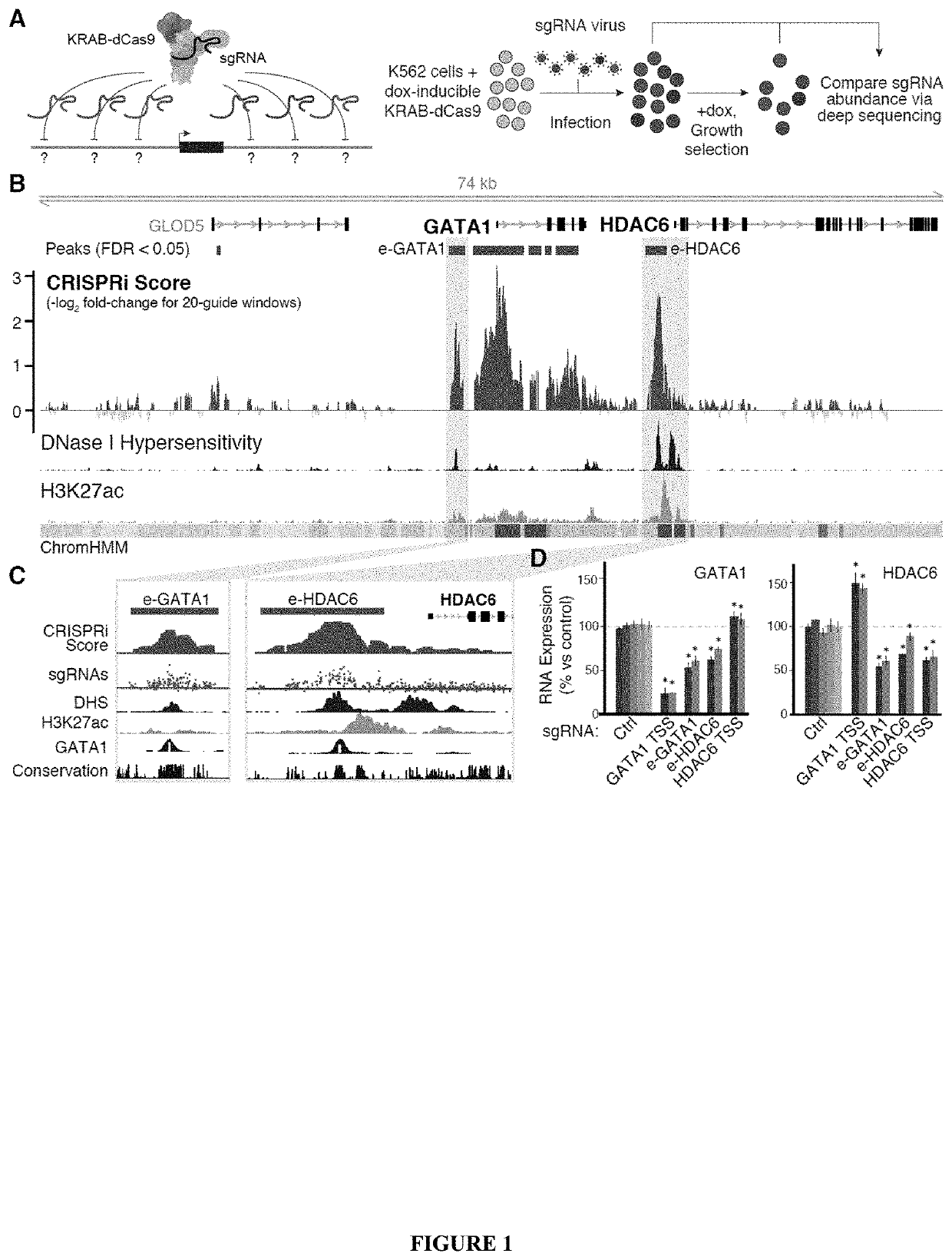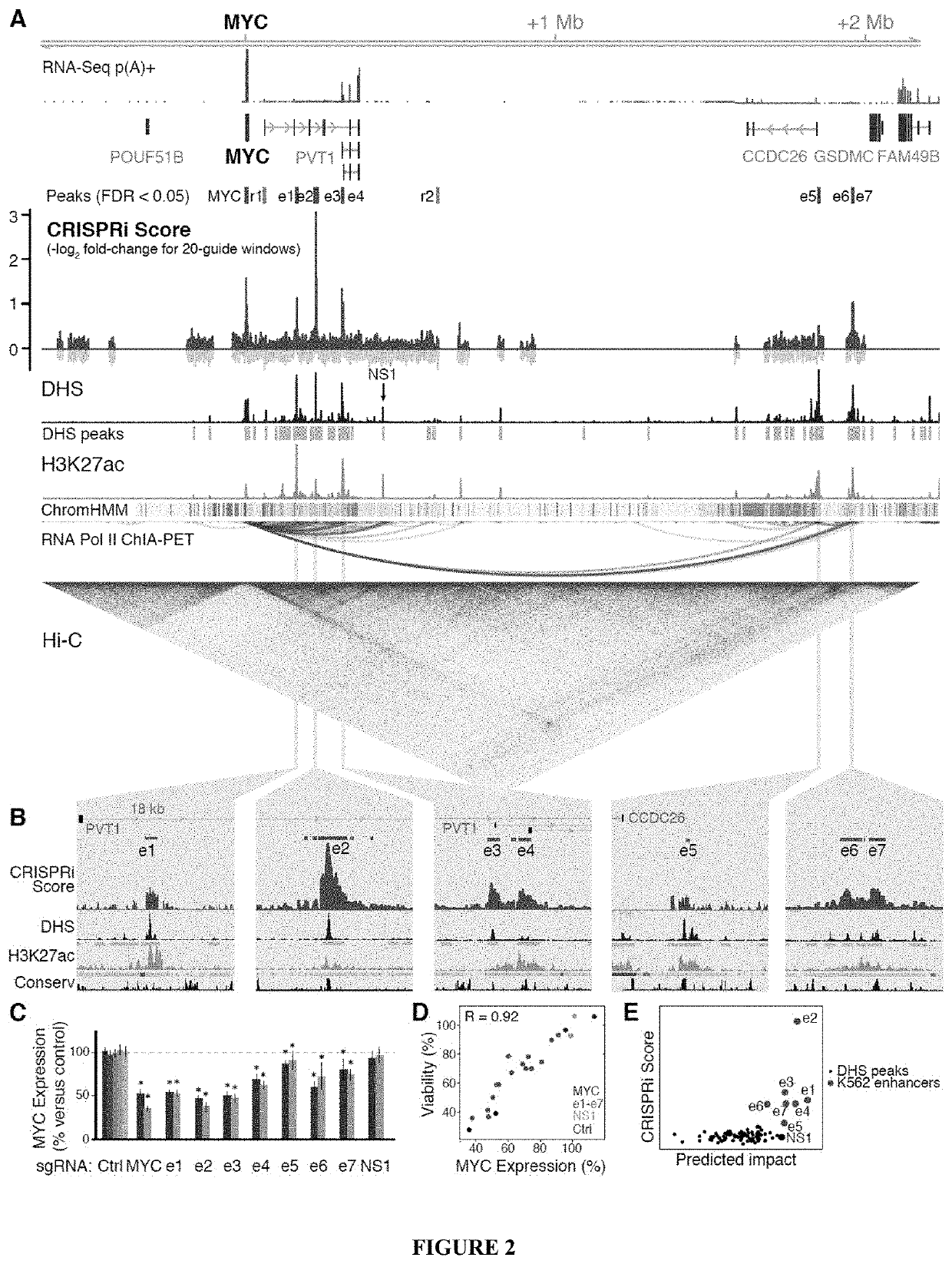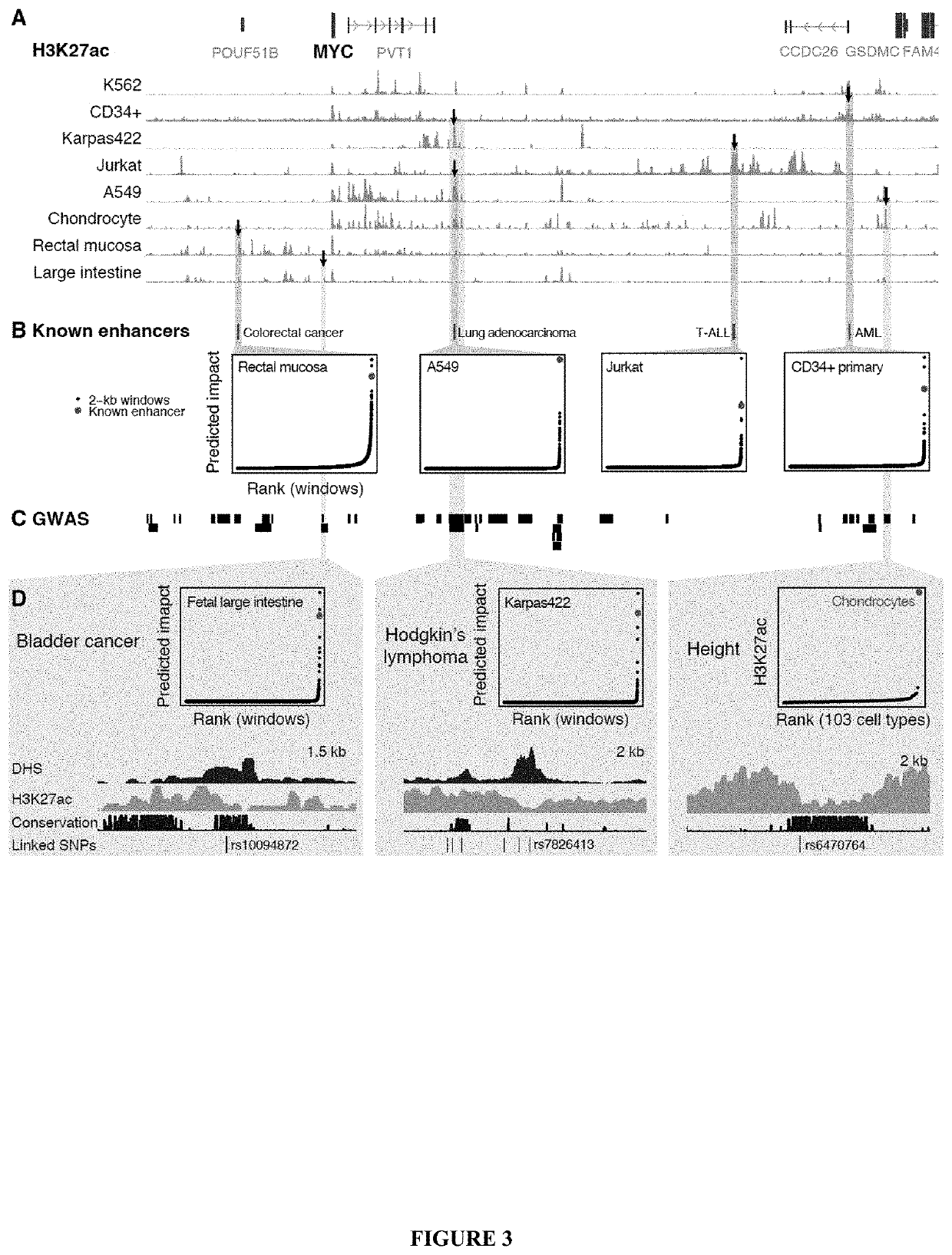Systematic screening and mapping of regulatory elements in non-coding genomic regions, methods, compositions, and applications thereof
a genomic region and regulatory element technology, applied in the field of systematic screening and mapping of regulatory elements in non-coding genomic regions, can solve the problems of complex rules that connect regulatory elements with target genes in the genome, and cannot determine which genes are regulated or assess quantitative effects on gene expression
- Summary
- Abstract
- Description
- Claims
- Application Information
AI Technical Summary
Benefits of technology
Problems solved by technology
Method used
Image
Examples
working examples
Example 1
[0956]Gene expression in mammals is regulated by noncoding elements that can impact physiology and disease, yet the functions and target genes of most noncoding elements remain unknown. We present a high-throughput approach that uses CRISPR interference (CRISPRi) to discover regulatory elements and identify their target genes. We assess >1 megabase (Mb) of sequence in the vicinity of 2 essential transcription factors, MYC and GATA1, and identify 9 distal enhancers that control gene expression and cellular proliferation. Quantitative features of chromatin state and chromosome conformation distinguish the 7 enhancers that regulate MYC from other elements that do not, suggesting a strategy for predicting enhancer-promoter connectivity. This CRISPRi-based approach can be applied to dissect transcriptional networks and interpret the contributions of noncoding genetic variation to human disease.
[0957]Materials and Methods
[0958]Selection of Targets for sgRNA Library.
[0959]To devel...
example 2
Genomic Sequences with Paired sgRNA-Expressing Lentivial Constructs
[1103]In addition to CRISPR interference, non-coding genomic regions can also be screened by deletion of genomic sequences with paired sgRNA and a catalytically active CRISPR effector protein. For example, FIG. 14 shows a strategy for deleting non-coding genomic regions with paired sgRNAs. Regions of the genome can be deleted with a lentiviral construct expressing a pair of sgRNAs. This requires a construct that can express two sgRNAs at sufficient levels for deletion (see FIG. 15). Readout can be PCR around the deleted region. The deletion shortens the size of the PCR amplicon, so the deletion rate can be estimated from the relative intensities of large (WT) and small (deletion) bands on a gel (FIGS. 16 and 17).
[1104]Several dual-sgRNA expressing constructs for targeted deletion of genomic sequences are shown in FIG. 15. To improve the efficiency of deletion from dual sgRNA-expressing lentiviral constructs, we varie...
example 3
Based Screens Distinguish MYC-Regulatory Elements
[1107]K562 cells expressing KRAB-dCas9 were infected with sgRNAs against MYC-regulatory elements as well as negative control sgRNAs that target regions near MYC that do not have regulatory function or that have no genomic target. We stained the cells with probes for the MYC transcript, sorted the top and bottom 10% of cells, and sequenced the sgRNAs in these high- and low-MYC populations. The CRISPRi score denotes enrichment of an sgRNA in the low-MYC population. This strategy distinguishes both MYC-expression enhancing elements and MYC-expression repressing elements, as shown in FIG. 27.
TABLE 1ASequences of qPCR primers.SEQSEQPrimerIDIDAssayTargetForward Primer (Fwd)NO:Reverse Primer (Rev)NO:ChIP-qPCRe1TGGGGGTACTGGACAGAAAG40TTCGGTTGGAGCCAGATAAG41ChIP-qPCRe2CCCTTCCTGGAAAGACAACA42CGCCCAGCCTTATCTGTAAT43ChIP-qPCRe3AACCCAATGCTTTTTCCACA44CCCTGGATCACTGCTTTTGT45ChIP-qPCRe4GCTCTGCAAGGCTTTCTCAT46CCCGTCTCCTTGTTTCTCTG47ChIP-qPCRNS1AACCGGTTTTGCGG...
PUM
| Property | Measurement | Unit |
|---|---|---|
| Digital information | aaaaa | aaaaa |
| Fraction | aaaaa | aaaaa |
| Fraction | aaaaa | aaaaa |
Abstract
Description
Claims
Application Information
 Login to View More
Login to View More - R&D
- Intellectual Property
- Life Sciences
- Materials
- Tech Scout
- Unparalleled Data Quality
- Higher Quality Content
- 60% Fewer Hallucinations
Browse by: Latest US Patents, China's latest patents, Technical Efficacy Thesaurus, Application Domain, Technology Topic, Popular Technical Reports.
© 2025 PatSnap. All rights reserved.Legal|Privacy policy|Modern Slavery Act Transparency Statement|Sitemap|About US| Contact US: help@patsnap.com



